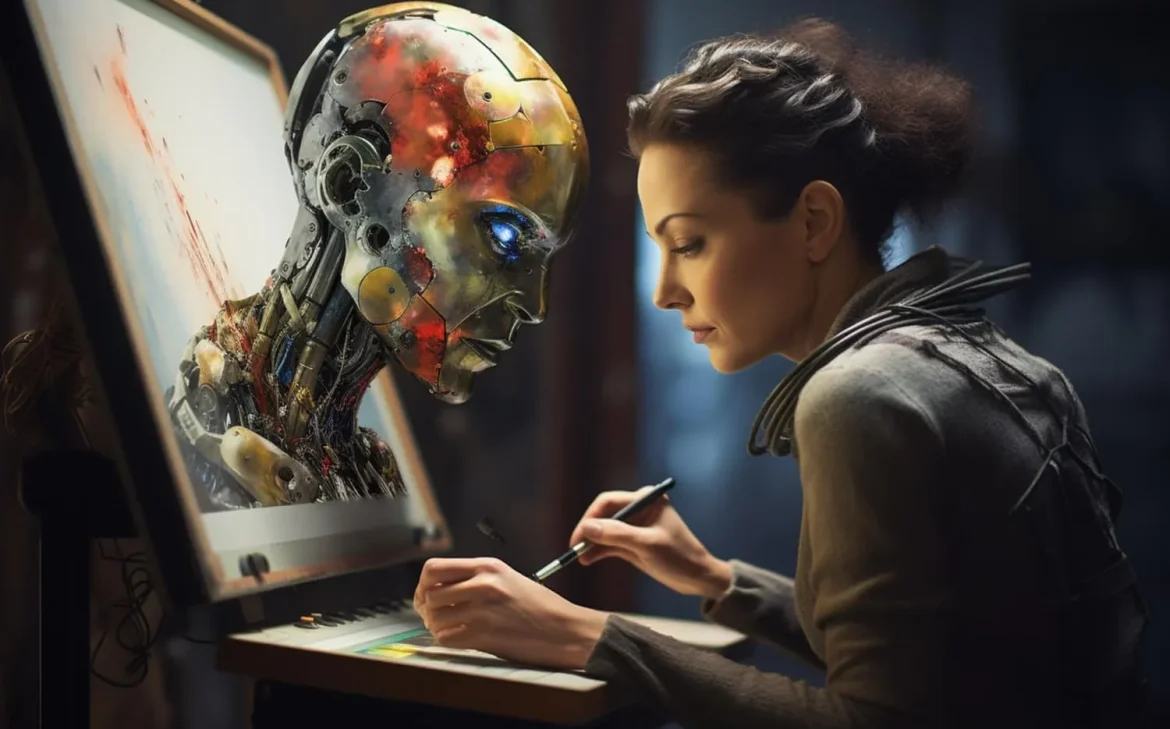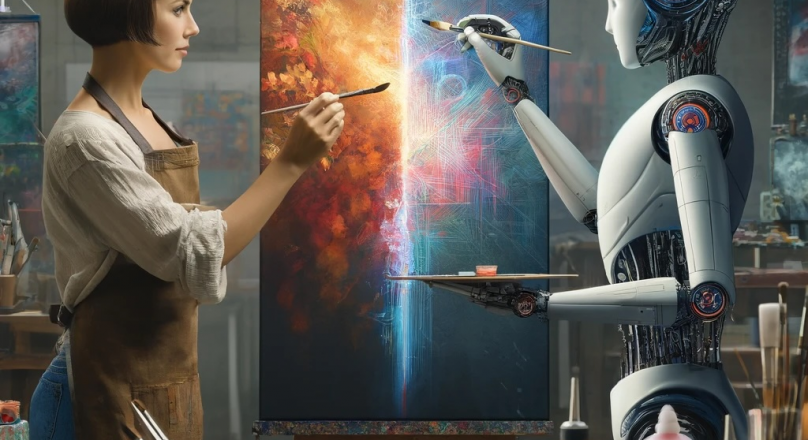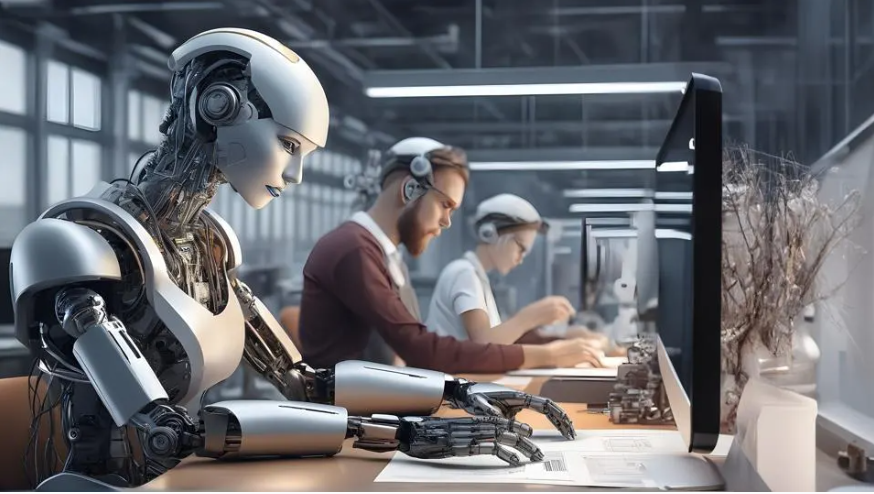Artificial Intelligence (AI) has become a powerful creative tool in the modern art world, but its journey didn’t begin overnight. The history of AI in art reflects decades of technological evolution, experimental thinking, and a gradual blending of human creativity with machine intelligence.
The Evolution of AI in Art
AI’s involvement in art is not just a recent phenomenon. It has developed over time, growing alongside advancements in computing and algorithm design.
Early Experiments (1950s – 1970s)
The idea of machines creating art dates back to the 1950s and 60s when early computer scientists and artists began exploring the creative potential of algorithms.
- Harold Cohen’s AARON: One of the first AI-driven art programs, developed in the 1970s, AARON could autonomously draw and paint. Cohen’s work is considered a groundbreaking step in computer-generated art.
- Algorithmic Art: Artists used mathematical rules to generate abstract art using early computers, paving the way for machine-involved creativity.
Growth of Computational Power (1980s – 1990s)
As computers became more accessible, digital art expanded, and artists began using generative techniques, where software created complex patterns and visual forms.
- AI at this stage was largely rule-based and relied on simple, pre-programmed instructions rather than learning from data.
Rise of Machine Learning (2000s)
The 2000s introduced machine learning algorithms that could analyze large datasets and identify patterns.
- Artists started training AI models on images and styles to produce more nuanced, data-driven art.
- Creative coding platforms emerged, allowing artists to blend code and design, further expanding AI’s artistic possibilities.
The Deep Learning Revolution (2010s)
With the rise of deep learning and neural networks, AI in art entered a new era.
- DeepDream (2015): Developed by Google, DeepDream visualized what AI sees inside neural networks, creating dreamlike, surreal images that gained widespread attention.
- Style Transfer: AI could now convincingly apply the style of famous painters to photographs, blending old and new aesthetics in real-time.
AI as Co-Creator (Late 2010s – Present)
The most recent developments involve text-to-image generators, GANs (Generative Adversarial Networks), and interactive AI tools that enable users to create highly sophisticated art with minimal input.
- DALL·E, Midjourney, and Stable Diffusion allow anyone to produce AI-generated art from simple text prompts.
- AI-generated art pieces have been exhibited in galleries and even sold at prestigious auctions (e.g., the 2018 sale of “Edmond de Belamy” by the Paris-based collective Obvious).
Key Milestones
- 1970s: Harold Cohen’s AARON begins autonomous art creation.
- 1990s: Algorithmic and generative art gain popularity.
- 2015: Google’s DeepDream sparks mainstream curiosity.
- 2018: Christie’s auction sells AI-generated portrait for $432,500.
- 2020s: Text-to-image AI models like DALL·E redefine accessible art-making.
Conclusion
The history of AI in art is a fascinating journey of collaboration between human imagination and machine capability. From simple algorithms to complex neural networks, AI has evolved into a powerful creative partner. As technology continues to advance, the relationship between artists and AI will keep reshaping what we define as art and creativity.





Leave feedback about this